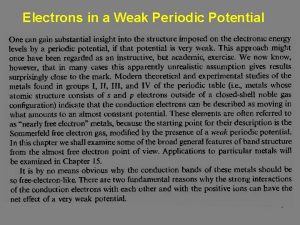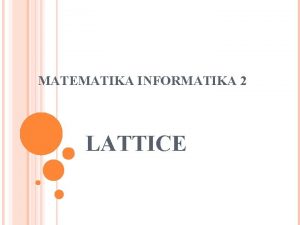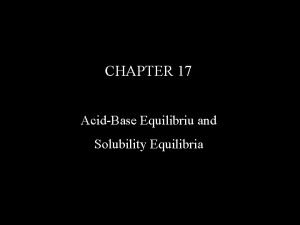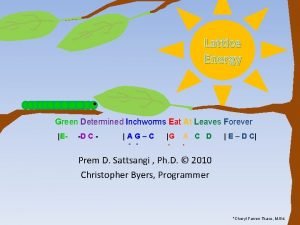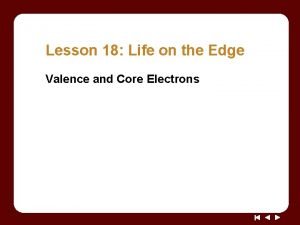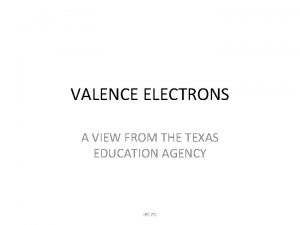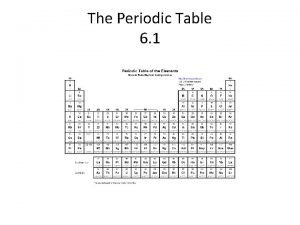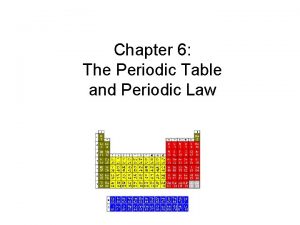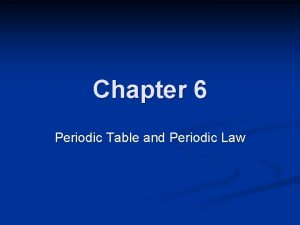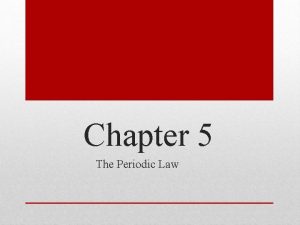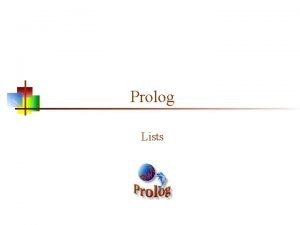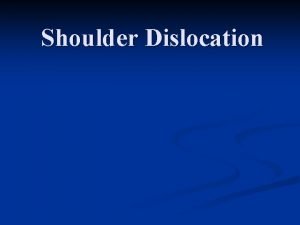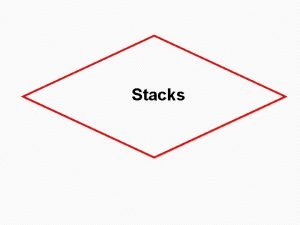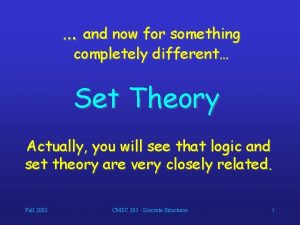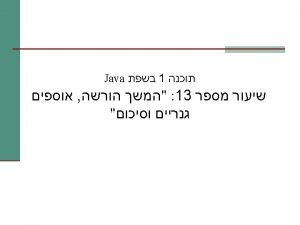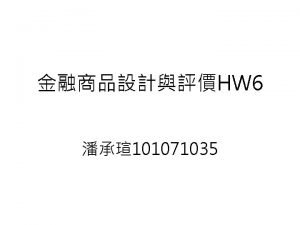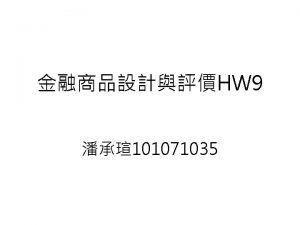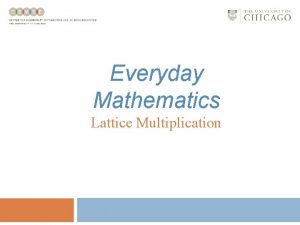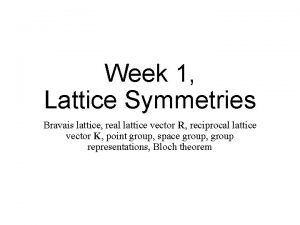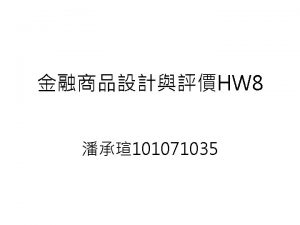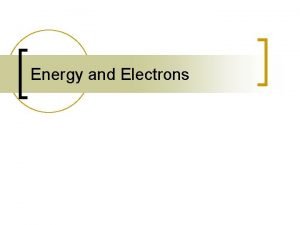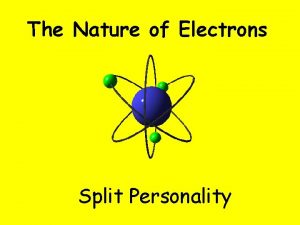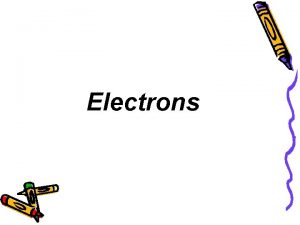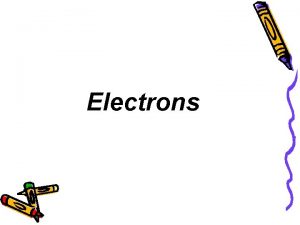Electrons in a Weak Periodic Potential EMPTY LATTICE







































































- Slides: 71

Electrons in a Weak Periodic Potential


EMPTY LATTICE APPROXIMATION

First Brillouin Zone


NEARLY FREE ELECTRON (NFE) APPROXIMATION Now we consider the weak periodic potential v is a weak potential Weak v means that the kinetic energy is much larger than the potential energy Which is independent of k

Thus this term does not depend on k The potential is periodic

Now let us go through the third term



We can using a good approximation ignore the interactions of C and D and … bands with the A band. If we only consider the nearest B band, then:

This means that the non degenerate perturbation theory cannot be longer valid, and one has to use degenerate perturbation theory instead. Near this point we have


Electrons in the weak periodic potential NEARLY FREE ELECTRON (NFE) APPROXIMATION non degenerate perturbation theory cannot be longer valid!

Now suppose we are dealing with one dimensional problem Translation Lattice Vector



Now we multiply both sides of the above equation by and then take integrals of both sides


Electrons in the weak periodic potential NEARLY FREE ELECTRON (NFE) APPROXIMATION



At the edge of the 1 BZ:









IF we again keep only two terms due to the NFE approximation, then: We now prove that C(k) = + C(k-G) or - C(k-G) at the edge of the 1 BZ: We had shown that



Okay. In the NFE model we find that the band structure behaves similar to the free electron approximation far from the edge of the Brillouin zone. Indeed the band structure of the NFE approximation deviates from free electron model only in the adjacent of the edge of the Brillouin zone. Therefore, it is important to learn how one can plot the band structure of an empty thee dimensional lattice.

Band Structure plotting of empty 3 dimensional lattices Before learning how to plot band structure in an empty space, it is useful to remind you that how one can draw various zones of Brillouin.

Oren Cohen, Guy Bartal, Hrvoje Buljan, Tal Carmon, Jason W. Fleischer, Mordechai Segev and Demetrios N. Christodoulides Nature 433, 500 -503(3 February 2005) a, First (green square) and second (four yellow triangles) Brillouin zones of a twodimensional square lattice with the high-symmetry points ( , X, and M) marked with white dots. b, Transmission spectrum of the first two bands of a two-dimensional square lattice with a lattice period d. c, Dispersion curves between the symmetry points of the first two bands. Negative curvature in these curves corresponds to normal diffraction regions. d, Diagram of the optical induction technique used to obtain the twodimensional, square photonic lattice. The blue planes with heavy black arrows indicate the plane waves used to optically induce the lattice. The red arrow indicates the direction of a probe beam entering the lattice. The orange circle indicates the width of the probe beam. e, Diagram of our set-up for obtaining a spatially incoherent (quasithermal), quasi-monochromatic beam.


http: //www. doitpoms. ac. uk/tlplib/brillouin_zones/zone_construction. php Draw a line connecting this origin point to one of its nearest neighbors. This line is a reciprocal lattice vector as it connects two points in the reciprocal lattice. Then draw on a perpendicular bisector to the first line. This perpendicular bisector is a Bragg Plane. Add the Bragg Planes corresponding to the other nearest neighbours.

The locus of points in reciprocal space that have no Bragg Planes between them and the origin defines the first Brillouin Zone. It is equivalent to the Wigner-Seitz unit cell of the reciprocal lattice. In the picture below the first Zone is shaded red. Now draw on the Bragg Planes corresponding to the next nearest neighbours. The second Brillouin Zone is the region of reciprocal space in which a point has one Bragg Plane between it and the origin. This area is shaded yellow in the picture below. Note that the areas of the first and second Brillouin Zones are the same.

The first twenty Brillouin zones of a 2 D hexagonal lattice. The (outside of) 15 th Brillouin zone for the simple cubic. The (outside of) 18 th Brillouin zone for the face-centered cubic The (outside of) 10 th Brillouin zone for the bodycentered cubic lattice.

Two dimensional Brillouin zone

Three dimensional Brillouin zone

First Brillouin Zone BCC

First Brillouin Zone FCC


Band structure of a simple cubic lattice along Γ to X direction. Along this direction we have:

Inside of the 1 BZ Outside of the 1 BZ Thus one would take some allowed shortest G vectors and try to plot their corresponded bands





This band is four fold degenerated




Find the band structure of an empty simple cubic (SC) along (111) direction

Find the band structure of an empty body centered cubic (bcc) along Γ(000) to H(010) for the first four allowed G vectors taking bcc structure factor into account Miller indexes h, k, l

Inside of the 1 BZ Outside of the 1 BZ Thus one would take some allowed shortest G vectors and try to plot their corresponded bands












Find the following empty fcc lattice band structure. Miller indexes are even or odd.
 Empty lattice
Empty lattice Lattice adalah
Lattice adalah Weak acid and weak base reaction
Weak acid and weak base reaction Strong and weak bases
Strong and weak bases Indicator used in strong acid and weak base
Indicator used in strong acid and weak base Lattice energy
Lattice energy What is a valence electron? *
What is a valence electron? * Life on the edge valence and core electrons answer key
Life on the edge valence and core electrons answer key How to tell how many valence electrons on periodic table
How to tell how many valence electrons on periodic table Periodic table protons neutrons electrons
Periodic table protons neutrons electrons Gain lose electrons periodic table
Gain lose electrons periodic table Number of valence electrons
Number of valence electrons Finding valence electrons
Finding valence electrons Action potential resting potential
Action potential resting potential Refractory period action potential
Refractory period action potential Electric potential and potential energy
Electric potential and potential energy Electric potential from electric field
Electric potential from electric field Sources of biopotential
Sources of biopotential How to find ionization constant for water potential
How to find ionization constant for water potential Water potential in plants
Water potential in plants Action potential resting potential
Action potential resting potential Graded potential vs action potential
Graded potential vs action potential Expression for electric potential difference
Expression for electric potential difference Hypopolarization
Hypopolarization Neuronal pool
Neuronal pool Market potential and forecasting
Market potential and forecasting Electric potential and potential difference
Electric potential and potential difference Graded potential
Graded potential Electrical potential
Electrical potential Neuromuscular junction ach
Neuromuscular junction ach Types of graded potentials
Types of graded potentials Define electric potential and potential difference.
Define electric potential and potential difference. Electric potential
Electric potential Osmotic potential vs water potential
Osmotic potential vs water potential Flaccid cell
Flaccid cell Reduction potential trend periodic table
Reduction potential trend periodic table The periodic table and periodic law chapter 6
The periodic table and periodic law chapter 6 Do metals have high ionization energy
Do metals have high ionization energy The periodic table and periodic law chapter 6
The periodic table and periodic law chapter 6 Ion size trend
Ion size trend Periodic family names
Periodic family names Prolog empty list
Prolog empty list Empty swing
Empty swing Http://.adg
Http://.adg Empty php
Empty php Empty bunch spreader
Empty bunch spreader Empty string
Empty string Empty state ux
Empty state ux So show me son how to laugh
So show me son how to laugh Short entrance lane
Short entrance lane Insincerity
Insincerity Empty nose syndrome
Empty nose syndrome Putti platt operation
Putti platt operation Empty space between traffic clusters
Empty space between traffic clusters Storm on the island date
Storm on the island date Empty set
Empty set Empty darkness
Empty darkness Compared to an empty ship the same
Compared to an empty ship the same Empty
Empty Klnk empty leg
Klnk empty leg Empty set
Empty set Moist heat definition
Moist heat definition Satisfactory empty inventory
Satisfactory empty inventory Upsloping runway illusion
Upsloping runway illusion Fit comparative and superlative
Fit comparative and superlative His tomb is empty now
His tomb is empty now Empty notch sign radiology
Empty notch sign radiology Control flow
Control flow Spigelian hernia
Spigelian hernia Moist heat definition
Moist heat definition Heat travels through empty space by
Heat travels through empty space by Empty
Empty
